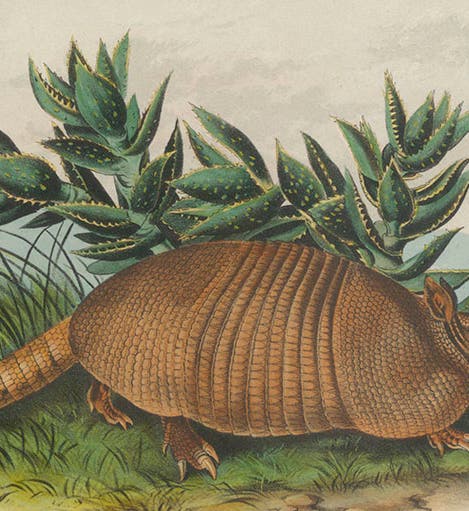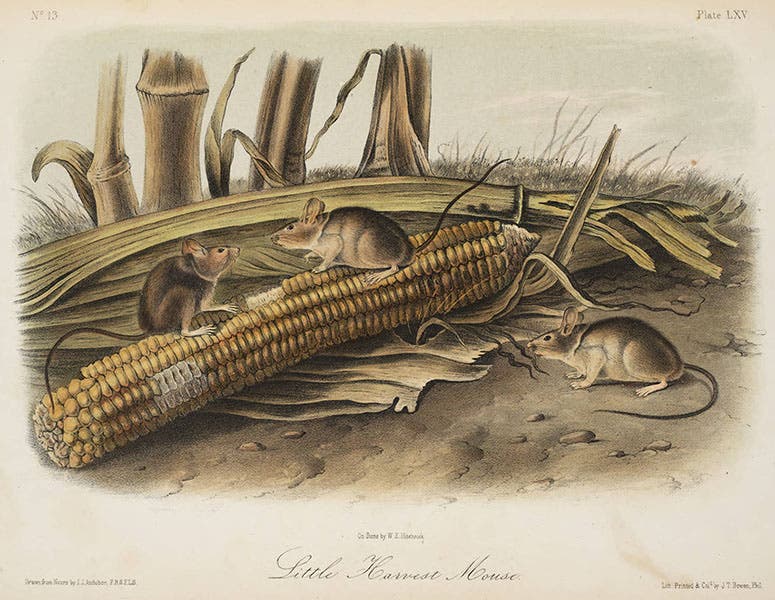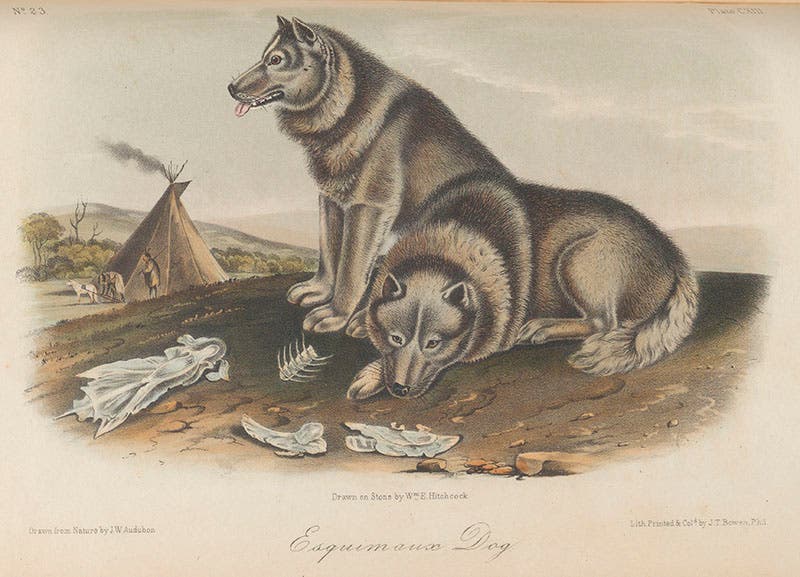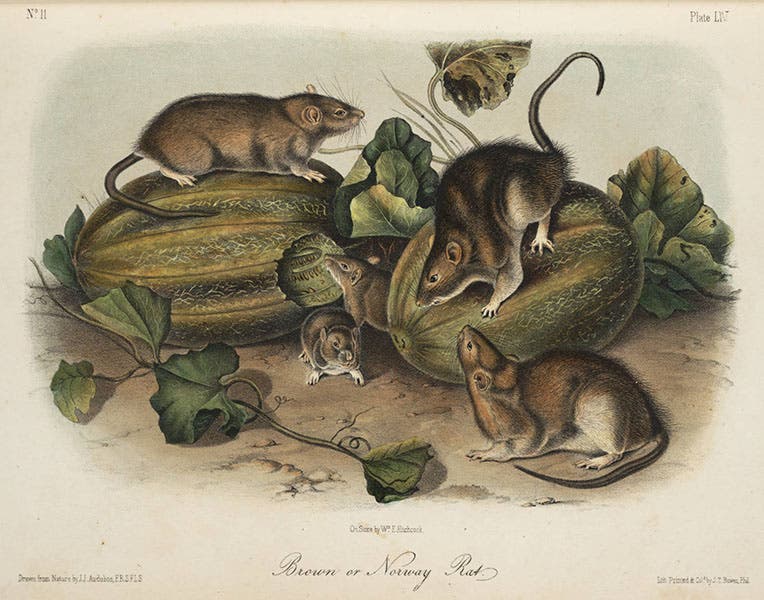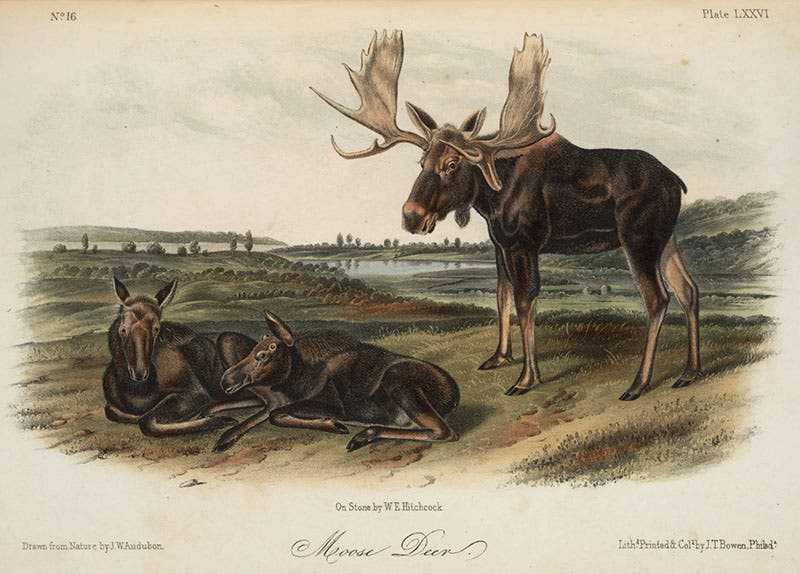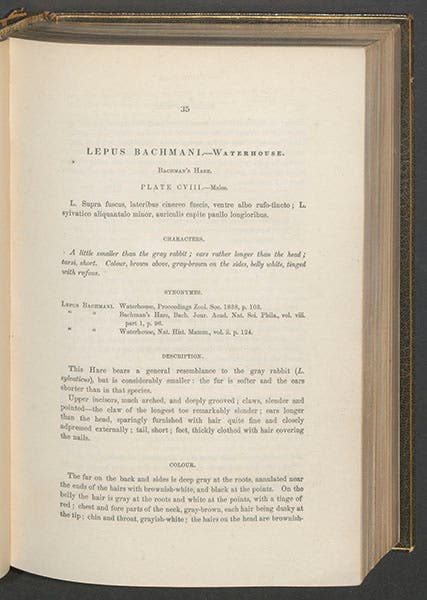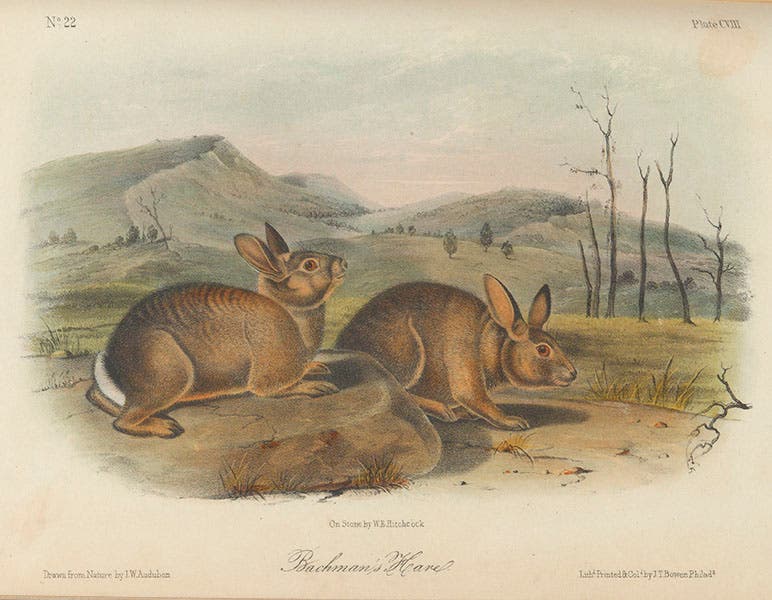Scientist of the Day - John Bachman
John Bachman, a minister and naturalist from South Carolina, was born Feb. 4, 1790. Although he presided over one of the largest congregations in the South for nearly 60 years, Bachman filled his spare time with his interest in American birds and mammals. He met John James Audubon in the early 1830s, when Audubon stayed for a month at his house in Charleston while in the throes of publishing his Birds of America, and Bachman later helped Audubon write the text for the Ornithological Biography that accompanied the Birds of America. At some point, they agreed to collaborate on a book on the mammals of North America, perhaps when both were attending the weddings of two of Bachman's daughters to Audubon's two sons, in 1837 and 1839. Audubon and his, John Woodhouse Audubon, provided the images for the Quadrupeds, and Bachman wrote the text.
The large folio version was printed in Philadelphia and New York and appeared in fascicles between 1844 and 1848 as The Viviparous Quadrupeds of North America. Immediately after it was completed, Audubon oversaw the reduction of the large lithographs to a smaller format, and the royal octavo edition, now called just The Quadrupeds of North America, was published in 3 volumes in 1849-54. This is the edition that we have in the Library.
It is not fair to Bachman to illustrate a post on him with illustrations by John J. and John W. Audubon, but the lithographs are more handsome than selected pages of Bachman's text, so that is what we are doing. The first five images here are, in order: The Nine-Banded Armadillo, the Little Harvest Mouse, the Esquimaux Dog, the Norway Rat, and the Moose Deer . John James drew the mouse and the rat, and son John Woodhouse did the other three. These are my fourth- through eighth-favorite images in the book (explanation below). All the paintings were lithographed by William E. Hitchcock, who doesn’t get nearly enough credit for executing the 155 illustrations in the Audubon/Bachman work.
We decided to include one page of text here, the beginning of Bachman’s account of his eponymous animal, Bachman’s Hare (now the western brush rabbit; sixth image). It was named in Bachman’s honor by George Waterhouse in 1839 and painted by John Woodhouse Audubon (seventh image).
We included the Quadrupeds in two of our exhibitions, Science goes West in 2004 (which is not online) and the 2009 Grandeur of Life, which is. If you want to see my first- and third-favorite quadruped lithographs, go to item 38, where we displayed the house mouse and the American mink. We used the swift fox for the introductory image to that section of the exhibition. I noticed some time ago that, for reasons inexplicable, I did not mention Bachman as the author of the text in our bibliographic entry in the exhibition catalog, giving all the credit to Audubon. I have always been sorry about that. Today, we try to redress that omission, a little. Dr. William B. Ashworth, Jr., Consultant for the History of Science, Linda Hall Library and Associate Professor emeritus, Department of History, University of Missouri-Kansas City. Comments or corrections are welcome; please direct to ashworthw@umkc.edu.

